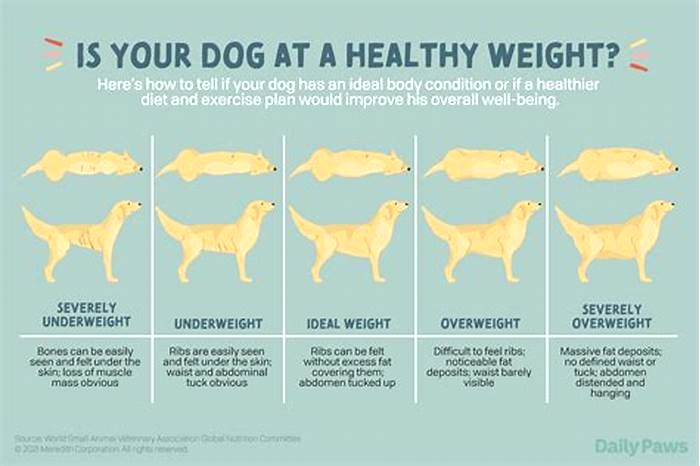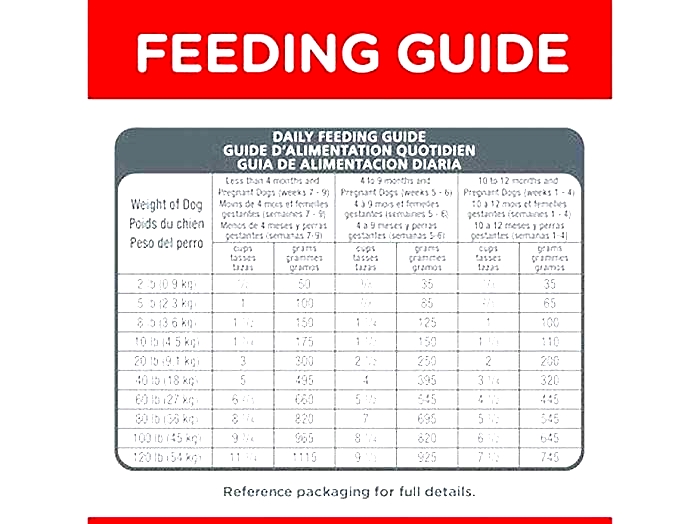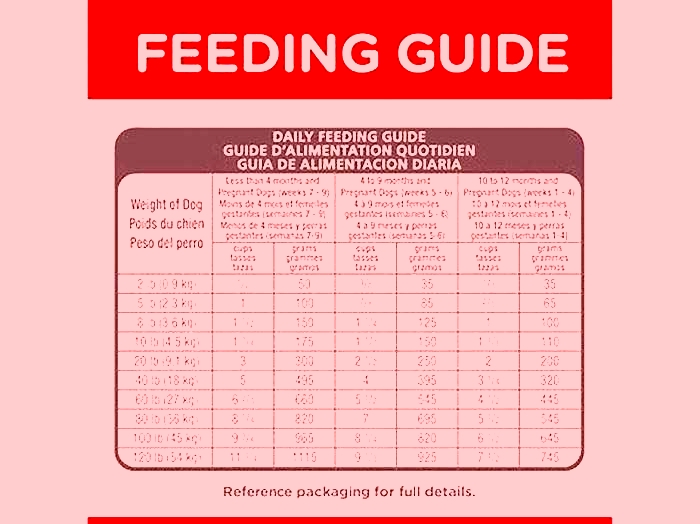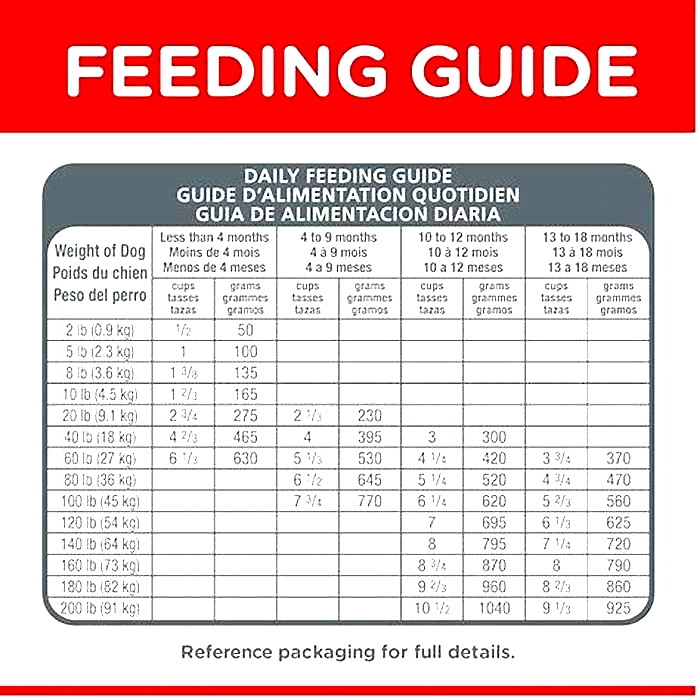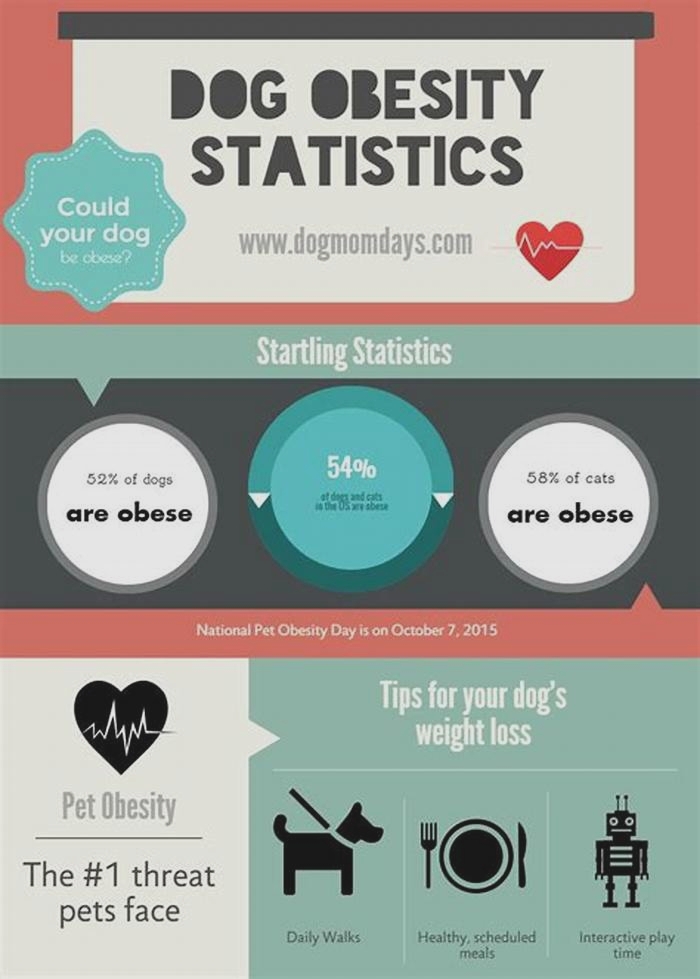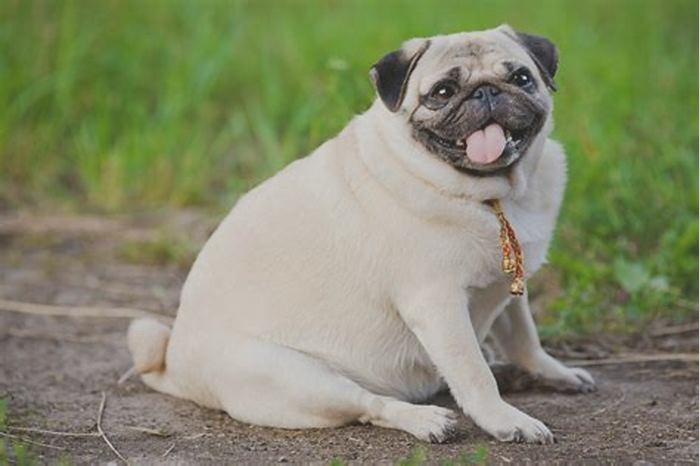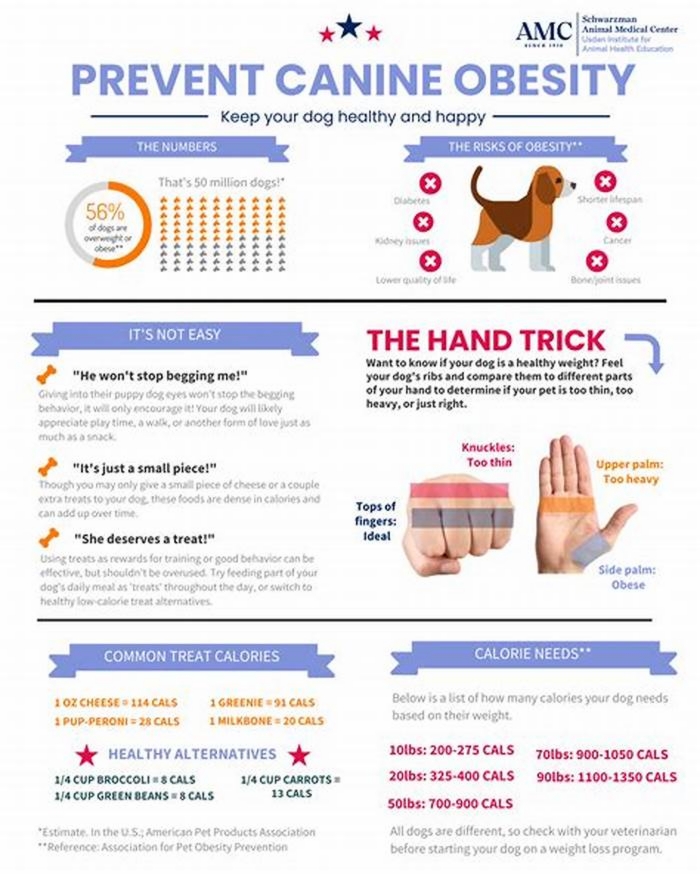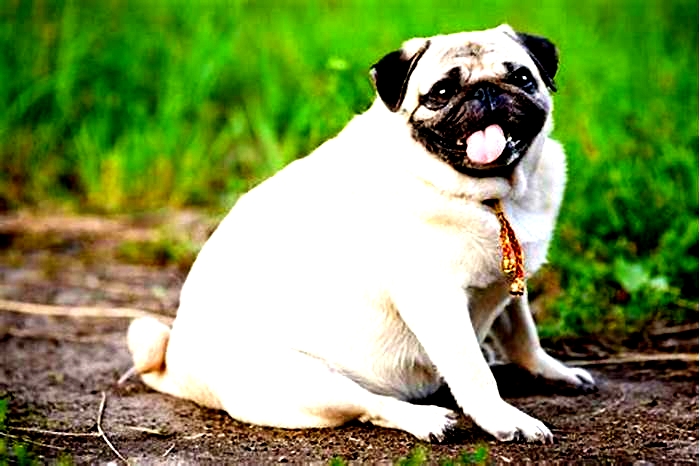dog obesity chart
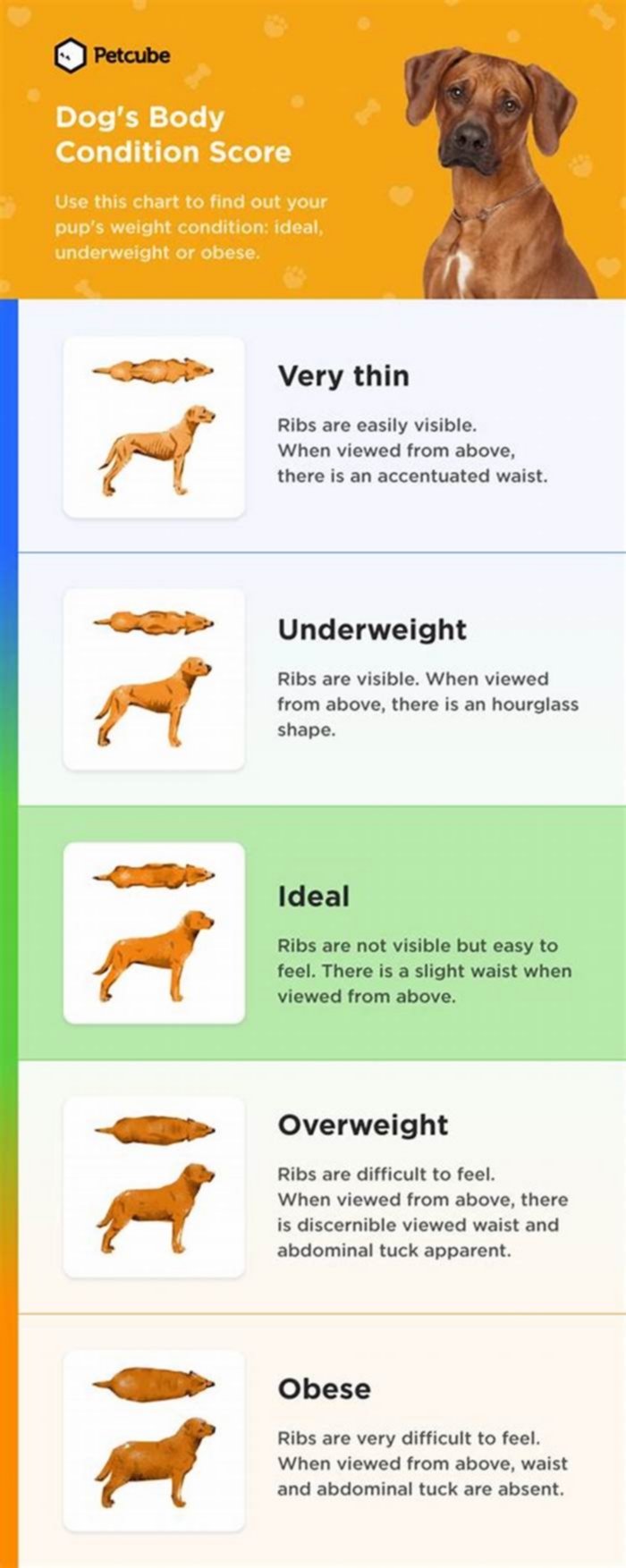
Is your dog overweight? Know the signs
Weight gain in dogs is not just caused by eating too many treats. There are a variety of factors that contribute to pet obesity. Here are some of the more common reasons your dog may be gaining weight.
Age. As dogs get older, their metabolism slows down, and they require fewer calories per day compared to younger, more active dogs. If they continue to eat the same diet, they are more at risk of obesity. Elderly dogs can also suffer from certain health conditions that may cause them to gain weight, such as diabetes, and joint problems, which may limit mobility.
Breed. Certain breeds are predisposed to weight gain due to their naturally lower energy levels. Other breeds may be genetically predisposed to weight gain. For example, scientists at the University of Cambridge have found that a significant proportion of Labradors and retrievers carry a variant of the POMC gene. This is strongly associated with obesity and a lack of appetite control.
Health issues. If your dog lost a significant amount of weight or experienced unexplained weight gain in a short time, they could be suffering from an underlying health condition, as hypothyroidism. Certain medications can also cause weight gain in canines, particularly steroidal anti-inflammatories.
Neutering/spaying. Neutering or spaying alters your pets natural hormone balance, which can cause weight gain. However, a study published in the Journal of the American Veterinary Medical Association found that these effects were only significant in the first two years after surgery.
Lack of exercise. Canine couch potatoes will burn off fewer calories than a dog that constantly has the zoomies! You will need to account for your dogs energy levelswhen determining the right amount of food to feed your pup. Smaller dog breeds will also require fewer calories than larger dog breeds. Dog food packaging will show feeding guidelines that you can use as a general guide. However, remember that every dog is different. If youre uncertain, always speak to your veterinarian.
Sex. Female dogs are more likely to gain excess weight compared to male dogs, especially after spaying. Estrogen plays a large part in appetite regulation, and spayed dogs produce less of this hormone. So, its appetite-suppressing effects are reduced. Contrary to popular opinion, both male and female dogs naturally produce estrogen, but its more pronounced in females because it controls ovulation.
Overfeeding. Some commercial dog foods and treats are high in calories, which can lead to weight gain in the long run. Just because certain prescription diets are labeled low-fat, it doesnt mean they are low in calories. Many budget foods contain dense fillers that lack the essential nutrients dogs need for optimum health. Check your dogs food to ensure there is enough protein. Portion sizes vary by food type and between dogs depending on their breed, age, and health status. A strict feeding schedule is still essential to help your dog lose weight.
Body Condition Scoring (BCS)
The 5 biggest questions you should ask your veterinarian to prevent pet obesity: How to check, what to feed, and how to exercise.
Pets with obesity are at increased risk for developing serious weight-related disorders such as diabetes, arthritis, high blood pressure, kidney disease, cancer, and more.
To help you better care for your dog or cat, here are five questions you should ask your veterinarian to keep your pet healthy. Theyre simple, wont embarrass you, and just may save your pets life.
1) Is my pet overweight?
This is the most important question you must ask your veterinarian and one your vet may not be eager to answer.Believe it or not, many veterinarians are simply afraid to tell you if your pet is overweight or has obesity. This is primarily due to the fact your veterinarian doesnt want to offend you inadvertently. Weight issues can be tricky to navigate and loaded with perceived judgments, strong emotions, and social stigmas. All of this leads to many vets remarking, Maybe Scooter should drop a few pounds, but then again, who shouldnt?
As a concerned pet owner, you need to understand your pets weight is one of the most influential factors in its longevity, quality of life, and disease prevention. To answer this question, your veterinarian will likely conduct a couple of measurements, determine a Body Condition Score (BCS - see above charts), and measure your pet's current weight.
Ask the question. Demand a thorough assessment. Dont be offended if the answer isnt what you expected. This isnt personal; its your pets well-being.
2) How many calories should I feed my pet each day?
Weve got to be specific when it comes to feeding our pets. Dont fall into the trap of inquiring, About how much food should I feed my pet? Youll probably get a generic, inaccurate response. You need to know the precise number of calories and nutrients your pet needs based on its current body condition and desired goals. By calculating the number of calories your pet needs, you can determine how much to feed, regardless of the type, brand, or formulation of food and treats you feed. This is a subtle but incredibly significant difference. Healthy nutrition is about feeding your pet the proper number of calories, containing the proper nutrients based on its current body condition and health needs.
Your veterinarian should then ask you a few lifestyle questions, perform a couple of calculations, and give you a narrow range of daily calories you should feed. Memorize this number. Find out how many cups or cans of your pet food this equals. Feed that amount.
Don't forget to include treats in your daily caloric counts. Those tiny calorie grenades can swiftly sabotage the best dietary plans.
3) How much weight should my pet lose in a month?
If your pet is like the majority of dogs and cats, itll need to shed a few unhealthy pounds of excess fat. You need to ask how much weight your pet needs to shed and how long it will take to reach a healthy weight and body condition. I prefer to think in terms of pounds per month due to practicality and performance. Monthly weight checks are practical and reasonable for even the busiest pet owners. A weight loss plans performance is critical to track and monitoring monthly trends is an accurate indicator of success or stagnation.
In general terms, a dog can safely lose 1 to 3 percent of its body weight and cats 0.5 to 2 percent per month. Many supervised dogs can safely lose up to 3 to 5 percent per month, and most cats should aim for about a half-pound (0.5 lb. or 0.25 kg.) per month.
Losing weight isnt easy or fast for pets, especially cats. If you put your pet on a crash diet, they can develop serious medical conditions, including a life-threatening form of liver failure that can occur in less than 72 hours.
Patience is essential for pet weight loss. Most canine patients will have a 3 to 6-month weight loss plan, and cats 6 to 12 months. Your veterinarian will probably formulate a step-weight loss plan that will gradually decrease the amount youre feeding over a 1 to 3-month period. This will help curtail cravings, begging, and late-night pestering.
Note I said help, not eliminate. There will be some unhappy pooches and purr babies when you institute a diet. Your veterinarian should provide you with tips on preventing these behaviors and transitioning to a new weight-loss diet.
4) What type of exercise does my pet need?
Most veterinarians and pet owners focus on how long a pet should exercise each day. While thats an excellent approach, I also advise asking what types of activities are best based on your pets species, breed, age, gender, and current physical abilities. The opportunities for physical activity with your pet are limitless: walking, swimming, agility, chasing toys, ball retrieving, and remote-controlled toys, to name a few, but adhering to an exercise program is ultimately determined by your pets physical ability and intellectual interest.
The general recommendation is that dogs need at least thirty (30) minutes of physical activity a day, and cats should strive for three five-minute structured play periods.
How you spend those exercise minutes will determine if you do it or not and if you stick to those activities. Make your interactions enjoyable, entertaining, and interactive to keep your dog and cat engaged and enjoying these physical activities.
Cat owners, dont ignore the essential role of physical activity for your cats physical and mental health and well-being. Whether you play with a feather duster or favorite toy, move the food bowl each feeding, or use a hip, high-tech toy, engage your cats inner predator and encourage it to pounce, leap, and prowl for several minutes at least three times per day.
Pet activity monitors are a great tool to document how much your pet is walking or playing each day. Better yet, you can share these reports with your veterinarian to identify any deficiencies or ways to optimize your training.
5) Is my pet at risk for a medical problem due to excess weight?
This is a very serious question that you need to understand for your pets future.
Dogs and cats with excess fat are at greater risk for developing diabetes, arthritis, high blood pressure, kidney disease, and many forms of cancer.
You need to have a frank conversation with your veterinarian to find out if your pet is potentially facing one of these weight-related disorders. If so, what can you do to reduce their odds of developing these conditions?
Preventing disease is our primary focus and one of the reasons APOP is passionate about the importance of maintaining a healthy weight and proper nutrition.
The most important decision you make each day about your pets health is what you choose to feed it. Choose wisely; your pets longevity and quality of life depend on it.
Its never too late to reduce your pets chances of contracting one of these serious disorders. Early recognition and awareness are the best defense against many diseases. Begin by asking these questions.
So there you have it, my five biggest questions you should ask your vet about pet obesity. Of course, there are many more topics you need to discuss during your time with your veterinarian, but your pets body condition should be covered at every exam.
The few minutes you spend on diet and weight could be the difference between two additional years of high-quality life or a shortened, suffering final stage of life.
Take the time to write down these questions, ask your veterinarian, and act on the answers. Together, you and your veterinary healthcare team can chart a course for a better, longer, and happier life for your pet. Its totally worth it.
This Dog Weight Chart Will Tell You If Your Dog Is Overweight
Whenever we start a weight loss journey, whether for ourselves or dogs, it takes preparation and determination to succeed, but it is worth it.
As little as five pounds of added weight can have an impact on our dogs health so its essential we keep on top of our pets weight to make sure theyre within a healthy range and put a plan together to help them shift those extra pounds if theyre overweight.

Dog weight chart: How to tell if your dog is overweight
The chart below explains what most dogs should look like if theyre a healthy weight, overweight, or even underweight.

What to do if your dog is overweight
If your dog is overweight, its now time to put a weight loss plan together to help them shift those extra pounds.
Before you start your journey, speak with your vet to make sure there are no underlying health issues to consider. Then, once you know there is no hidden reason for your dog's weight gain, you can research diets, such asweight loss dog foods.
It's important to remember that there is a difference between weight loss, maintenance, and light foods. This is why research is so important because you can make sure you find a diet dog food thats just right for your dogs needs.
Your vet may recommend one or two to consider, but since you know your dog better than anyone, the final decision about which food is best for your dog will remain your choice.
Once you've settled on a diet for your dog, the next step will be to monitor their food intake and adjust to suit - for example, you may need to adjust your dog's portion size after a few weeks or months so they don't start to maintain before reaching their target weight.
How fast should a dog lose weight?
According to VCA Hospitals, a safe loss for your dog is between 3-5% per month, but it will vary based on their breed, size, and how much they have to lose. In most cases though, dogs will meet their target weight within 6-8 months.

Exercise is key to weight loss
Once you're happy that your dog's diet is settled, the next thing to consider is how to increase their exercise safely.
This infographic shares some useful statistics about recommended daily exercise and typical healthy weights for some of the UK's most popular dog breeds.

Next issue we will be sharing more top tips on how to make exercising with your dog fun! In the meantime, head over to our social pages and share your own weight loss tips with us - we'd love to hear from you.

